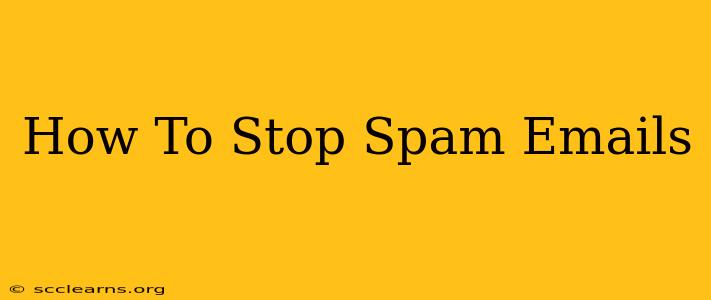Are you tired of your inbox overflowing with unwanted emails? Spam emails are not only annoying, but they can also be dangerous, containing malware and phishing scams. This comprehensive guide will show you how to effectively stop spam emails and reclaim control of your inbox.
Understanding the Spam Problem
Before diving into solutions, it's helpful to understand why you're receiving spam in the first place. Spammers use various techniques to collect email addresses, including:
- Web forms: Carelessly filling out online forms can expose your email address.
- Email harvesting: Bots scan websites for email addresses listed in the source code.
- Purchased lists: Spammers buy lists of email addresses from dubious sources.
- Phishing and malware: Infected devices can automatically send your email address to spam lists.
Effective Strategies to Block Spam Emails
Now, let's explore practical steps to minimize unwanted emails:
1. Utilize Spam Filters: Your First Line of Defense
Most email providers (Gmail, Outlook, Yahoo, etc.) have built-in spam filters that automatically detect and move suspicious emails to a spam folder. Make sure yours is enabled and properly configured. Regularly check your spam folder to ensure legitimate emails aren't mistakenly flagged.
2. Be Cautious When Signing Up for Websites and Newsletters
Think twice before providing your email address. Only share it with reputable websites and organizations. Look for privacy policies and opt-out options. When signing up for newsletters, use a separate email address dedicated to subscriptions.
3. Avoid Suspicious Links and Attachments
Never click on links or open attachments from unknown senders. These can contain malware that compromises your device and exposes your email address to further spam. Always verify the sender's identity before interacting with any email.
4. Mark Spam Emails as Spam
This helps your email provider learn what type of emails you consider spam, improving the accuracy of its spam filter. Consistently marking spam emails is crucial for effective spam filtering.
5. Strengthen Your Email Account Security
Use a strong, unique password for your email account. Consider enabling two-factor authentication (2FA) for an extra layer of security. Regularly update your passwords and keep your software up-to-date to patch security vulnerabilities.
6. Unsubscribe from Unwanted Newsletters
Many legitimate newsletters provide an "unsubscribe" link at the bottom of their emails. Use this option to remove yourself from their mailing list. Be aware that some unsubscribe links may not work effectively.
7. Use a Dedicated Spam Email Address
As mentioned earlier, consider creating a separate email address specifically for online registrations and subscriptions. This prevents spam from reaching your primary inbox.
8. Report Phishing Emails
If you receive a phishing email (an attempt to steal your personal information), report it to your email provider and the relevant authorities. This helps prevent others from falling victim to the same scam.
Advanced Techniques for Serious Spam Problems
If you're still struggling with excessive spam despite these steps, consider these more advanced options:
- List your email address carefully online: Avoid posting it publicly on websites or forums.
- Consider a dedicated spam filter: Some third-party email clients and services offer enhanced spam filtering capabilities.
- Check your DNS records: Make sure your domain's SPF, DKIM, and DMARC records are properly configured to prevent email spoofing.
By implementing these strategies, you can significantly reduce the amount of spam you receive and protect yourself from online threats. Remember that vigilance and proactive measures are key to maintaining a clean and secure inbox. Regularly review and update your approach to combat evolving spam tactics.

